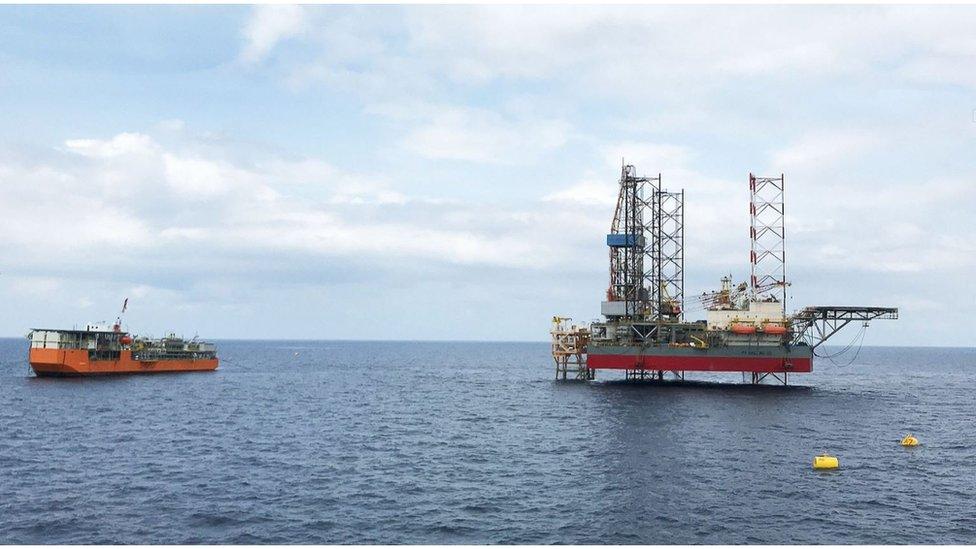Can striking oil turn Cambodia's economy around?
- Published

In a Facebook post, Cambodia’s Prime Minister Hun Sen described the country’s first few drops of oil as “a blessing for Cambodia” and “an important first step”.
The project, which started pumping oil at the end of December, had been 15 years in the making and had suffered several false starts.
Hun Sen said oil production would be a boon for Cambodia’s economy from 2021 onwards and that revenues from the sector would be used to improve education and health.
Cambodia might well look with envy at some of its neighbours, with substantial oil industries that make a key contribution to government revenues.
But will its nascent oil sector be able to make a real difference to Cambodia’s economic future?
Hard times
The country could use a boost. It suffered a sharp economic downturn due to the Covid-19 pandemic, after two decades of strong growth.
Although Cambodia is one of Southeast Asia’s poorest countries, it has seen consistent growth over the last two decades, averaging 7.7% a year according to the World Bank.
But Cambodia’s economy shrank by about 2% last year.
Construction, tourism and merchandise exports, which accounted for 70% of growth and 39% of employment, were particularly badly hit.
Small industry
Some analysts believe the oil sector will likely remain too small to lead an economic recovery in Cambodia.
The country struck a deal with Singapore-listed KrisEnergy in 2017 to develop 3,083 square kilometres of the Khmer basin. KrisEnergy estimates that the first phase of development will generate around 7,500 barrels a day.
The company doesn’t know yet if the project is likely to extend to further development of oil fields in Cambodia.
“We will need to study production data for at least six months before deciding how to proceed with further development phases depending on reservoir productivity,” said Tanya Pang, KrisEnergy’s spokeswoman.
Cambodia's Angkor Wat Temple deserted in lockdown
Even if the sector does expand significantly, Cambodia remains an oil minnow. The biggest producers - the US, Saudi Arabia and Russia - all produce more than ten million barrels a day, according to the US Energy Information Administration.
Even neighbouring Thailand pumps more than half a million barrels.
“Absolutely, there may be more. But even if you were to double it, it’s still not going to be transformational to the Cambodian economy,” said Stephen Higgins, from the Phnom Penh-based corporate advisory firm Mekong Partners.
Early estimates suggested that the oil field could be very significant. An official at Chevron, which sold its stake to KrisEnergy, suggested that the site could have up to 700 million barrels.
Later estimates suggested the field was far more modest, with around 30 million barrels. KrisEnergy has put the amount of recoverable oil at less than 10 million barrels.

Resources curse
Cambodia is likely to see a modest bump to its revenues from the project. Between royalties and taxes, the government will make around $500m from the project.
That number is small compared to the revenues its neighbours collect. Malaysia’s state oil company Petronas typically supplies about a fifth of government revenues. Tiny East Timor uses the interest from an $18bn petroleum fund to provide around 88% of government revenues.
There is a slightly ironic upside to a modest-sized industry. Some economists have suggested that countries with resources sectors that dominate the economy often see lower growth rates and poorer governance. The phenomenon is known as the resources curse.
A big resources sector can, for example, increase the exchange rate, which is a disadvantage for other exports. It can draw resources and talent away from other industries, stifling innovation and entrepreneurship.
Mr Higgins said a modest oil sector, at the very least, won’t have that effect.
“A lot of countries have really run off the rails when they discovered resources. That’s not really a risk here,” he added.